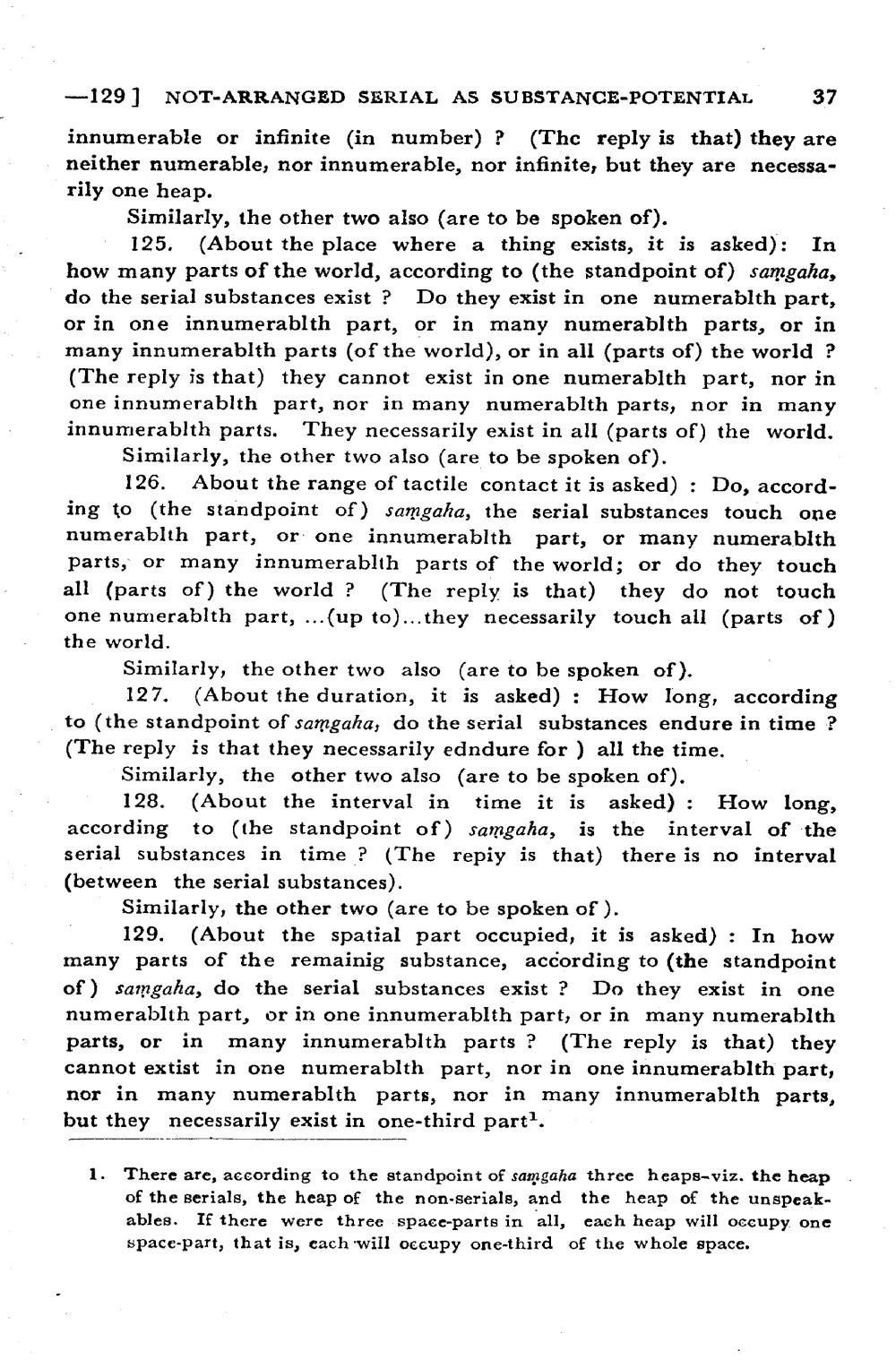________________
-1291 NOT-ARRANGED SERIAL AS SUBSTANCE-POTENTIAL
innumerable or infinite (in number) ? (Thc reply is that they are neither numerable, nor innumerable, nor infinite, but they are necessarily one heap.
Similarly, the other two also (are to be spoken of).
125. (About the place where a thing exists, it is asked): In how many parts of the world, according to the standpoint of samgaha, do the serial substances exist ? Do they exist in one numerablth part, or in one innumerablth part, or in many numerablth parts, or in many innumerablth parts (of the world), or in all (parts of) the world ? (The reply is that they cannot exist in one numerablth part, nor in one innumerablth part, nor in many numerablth parts, nor in many innumerablth parts. They necessarily exist in all (parts of the world.
Similarly, the other two also (are to be spoken of).
126. About the range of tactile contact it is asked) : Do, according to the standpoint of) samgaha, the serial substances touch one numerablth part, or one innumerablth part, or many numerablth parts, or many innumerablth parts of the world; or do they touch all (parts of) the world ? (The reply is that) they do not touch one numerablth part, ...(up to)...they necessarily touch all (parts of) the world.
Similarly, the other two also (are to be spoken of).
127. (About the duration, it is asked) : How long, according to the standpoint of samgaha, do the serial substances endure in time ? (The reply is that they necessarily edndure for all the time.
Similarly, the other two also (are to be spoken of).
128. (About the interval in time it is asked): How long, according to (the standpoint of) samgaha, is the interval of the serial substances in time ? (The repiy is that) there is no interval (between the serial substances).
Similarly, the other two (are to be spoken of).
129. (About the spatial part occupied, it is asked) : In how many parts of the remainig substance, according to the standpoint of) samgaha, do the serial substances exist ? Do they exist in one numerablth part, or in one innumerablth part, or in many numerablth parts, or in many innumerablth parts ? (The reply is that) they cannot extist in one numerablth part, nor in one innumerablth part, nor in many numerablth parts, nor in many innumerablth parts, but they necessarily exist in one-third part?.
1. There are, according to the standpoint of samgaha three heaps-viz. the heap.
of the serials, the heap of the non-serials, and the heap of the unspeakables. If there were three space-parts in all, each heap will occupy one space-part, that is, cach 'will occupy one-third of the whole space.




